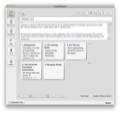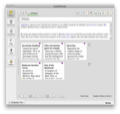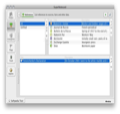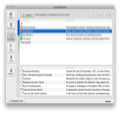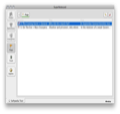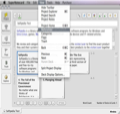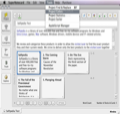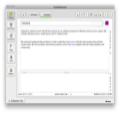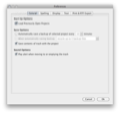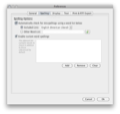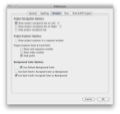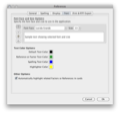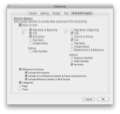Notecards are useful tools that will allow novelists to write down and organize their ideas with ease. SuperNotecard helps writers manage their notecards and create their stories' narrative lines .
Notecards can be used by novelists to organize their ideas and visualize their mistakes a lot easier.
SuperNotecard lets writers gather their ideas, insert them into cards (which can be further organized into categories or volumes), manage novel characters and even create flags for every chapter.
SuperNotecard also has some very interesting features like Applescript support and the possibility to quickly add references to your texts.
The Looks
SuperNotecard has a standard interface for a Java-based application and it will allow you to access most of its features from the main window.
Displaying all cards in this manner is not a very good idea, since this makes the search for a certain card a lot harder than searching inside an organized hierarchy of cards.
The most important actions, like explore (which lets you visualize the project content), category management and references are accessible from the left panel. The central window is the place where you will spend most of the time, while writing your texts.
The right panel is mainly a toolbar where you can access the most important facts like like your story's chapters, the current categories or flags, and also the references, if the explore panel is activated. Projects are open in tabs, which can be accessed in the bottom of the main window.
The Works
Starting a new project is really easy, all you have to do is select its type (fiction or non-fiction), and then start with a blank sheet. Here you can also choose to start with a template, an option that can be the starting point for your project, and which will surely help beginners understand how the application works or preview its base components.
New users should also download the manual from within the application, because it contains a lot of information about SuperNotecard itself, how you can use it and will also allow you to learn a number of keyboard shortcuts that can make your work a lot easier at times.
After selecting a title for your project, you can insert some notes that can contain various things, from personal thoughts regarding the text to an objective view regarding the novel. Note that the application includes a grammar check option, so if any words are misspelled, they will be highlighted in blue.
New decks can be created using the buttons from the upper side of the central window. They can be used to store your cards, and can also provide an easier way to manage your ideas. The first deck may contain a background story about the things you are going to write in your novel.
The information here can vary from character backgrounds to nature description or even personal background, if you are writing an autobiography.
By double clicking each deck you can access all the included cards. Here you can add cards, edit or even delete them if they are no longer a part of your story. In the lower panel you can access some buttons that will increase the card size, modify the viewing style, or you can customize the deck even further by accessing the deck display options, that let you change deck content, layouts, or even choose another default background.
Another useful function is element numbering that lets you view the current position for each element. Also important, one can visualize factors and referrals on the left side of the cards, which can be accessed at any time, if needed.
Double clicking each card in a deck will allow you to edit it or, if you start with an empty deck, write the desired text. One can insert highlights for the most important ideas in the text, and also choose a name for the chapter.
If you need a lot more workspace than the one already provided, you should use the explore button. This will hide the right panel, giving you a better viewing perspective for your text, and letting you browse through cards or decks easier.
If you are a researcher, you will surely need to insert the references used for your work. SuperNotecard can also help you here, because it provides a whole panel where you can insert the names of your references, and even the parts you are referring to.
The categories panel is the place where you can split your work into volumes or chapters. The best way to do this is by choosing the key aspects of your novel and centering the other ideas around them. Categories can also be sorted by title or date, so you can easily find an older card, if you need to.
An user can also set flags, if he feels that some ideas need further attention, more references or simply they need another look before the project is finished. Flags are very useful for a novelist, because they can pinpoint the location of ambiguous ideas. SuperNotecard can also help here, because, when flagging an item, you can insert a reason for the flag, and when you come back to it, you'll know the reason and start making changes.
While working, you will surely delete a lot of cards. Don't worry if you delete one by mistake, since all deleted items can be safely recovered from the Trash panel.
You can also visualize how many words are included in your work using the word count button located in the lower area of the main window.
The Good
I also liked the fact that SuperNotecard will allow you to create a hierarchy for your categories by using the timeline.
The Bad
The Truth
The application can also be used by inexperienced users who simply want to organize their stories with ease. All in all, you should give it a try and see if it suits your needs.
Here are some snapshots of the application in action:
 14 DAY TRIAL //
14 DAY TRIAL // 